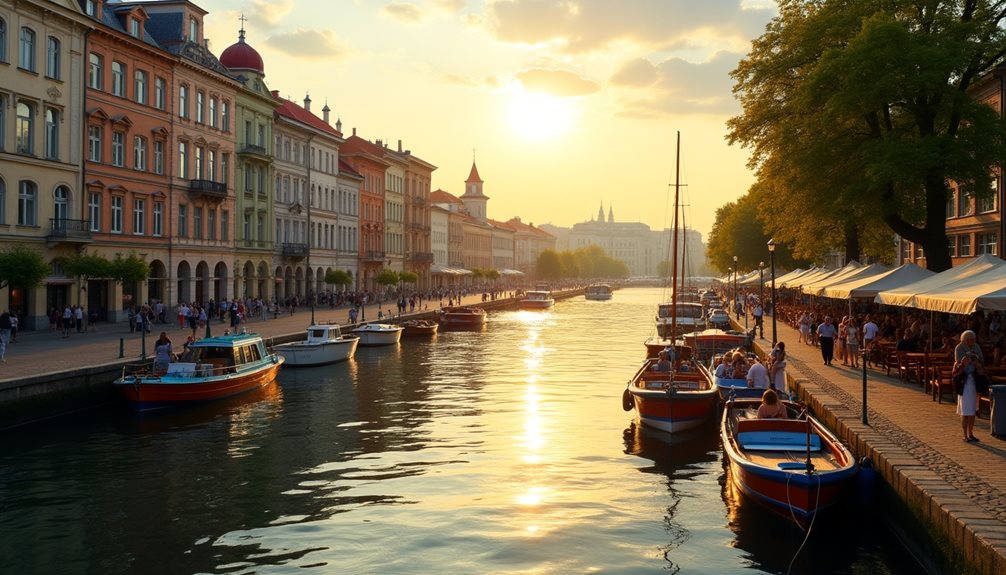The significance of parks and green spaces in Moscow extends far beyond mere aesthetics, playing an essential role in enhancing the quality of urban life. These spaces foster community engagement and provide invaluable opportunities for recreation, contributing to both physical and mental well-being. Additionally, they serve as critical green lungs for the city, improving air quality and supporting biodiversity. As urbanization continues to rise, the importance of these natural sanctuaries in mitigating pollution and preserving cultural heritage cannot be understated. How do these factors collectively shape the urban experience in Moscow?
Community Engagement
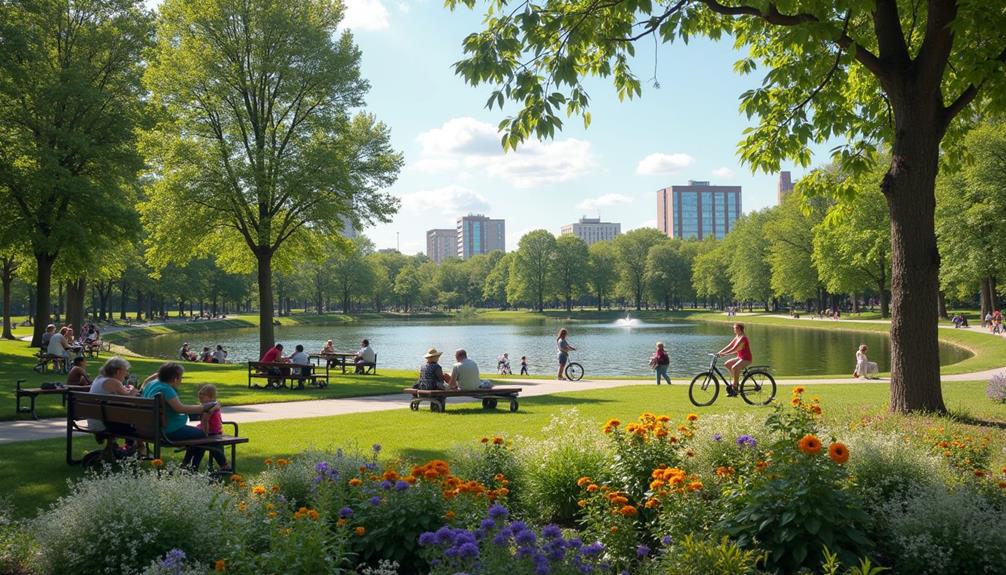
Community engagement plays a pivotal role in the development and maintenance of parks and green spaces in Moscow. By involving local residents in the planning and upkeep of these areas, the city fosters a sense of ownership and responsibility among its citizens. This participatory approach guarantees that the parks and green spaces not only meet the needs of the community but also reflect their values and preferences.
Public forums, workshops, and surveys are commonly employed to gather input from residents. These initiatives facilitate transparent dialogue between municipal authorities and citizens, enabling the formulation of plans that are more inclusive and representative.
Additionally, volunteer programs allow residents to contribute directly to the maintenance and beautification of their local parks, reinforcing community bonds and enhancing civic pride.
Community-driven events, such as tree planting days and local festivals, further strengthen this engagement. These activities serve as opportunities for residents to connect with one another and with their environment, fostering a collective stewardship for public spaces.
Physical Health Benefits
Access to parks and green spaces in Moscow provides significant physical health benefits to its residents. These natural environments offer abundant opportunities for physical activities such as walking, jogging, cycling, and various sports. Engaging in regular physical exercise is vital for maintaining cardiovascular health, improving muscle strength, and enhancing overall physical fitness.
Moreover, parks serve as accessible venues for all age groups to participate in outdoor activities, which can reduce the prevalence of sedentary lifestyles. By promoting an active lifestyle, green spaces help mitigate the risks associated with obesity, diabetes, and hypertension. The availability of such spaces encourages regular physical activity, which is essential for maintaining a healthy weight and preventing chronic diseases.
Additionally, the presence of trees and plants in these areas contributes to improved air quality by filtering pollutants and producing oxygen. Cleaner air leads to better respiratory health, reducing the incidence of asthma and other respiratory conditions.
The cooling effect of green spaces also offers a respite from the urban heat island effect, making outdoor physical activities more comfortable and appealing.
Mental Well-being
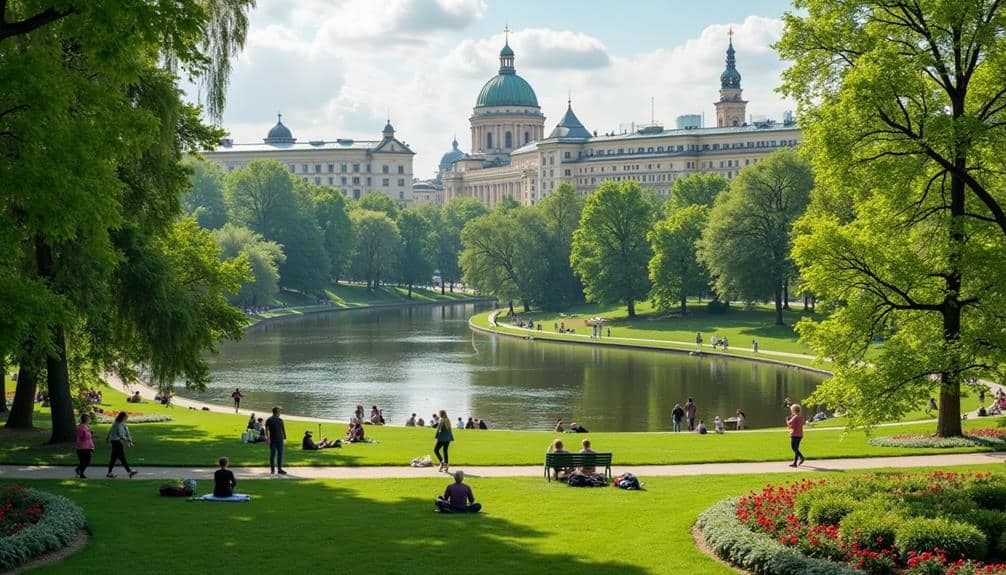
Interacting with parks and green spaces in Moscow greatly enhances residents’ mental well-being. In a bustling metropolis, these verdant oases provide essential respite from urban stressors. Exposure to natural environments has been empirically linked to reduced levels of anxiety, depression, and psychological distress. The calming effect of greenery and open spaces fosters a sense of tranquility, allowing individuals to unwind and recharge.
Furthermore, parks offer opportunities for social interaction, which is a vital component of mental health. Communal activities such as group exercises, picnics, or casual strolls facilitate connection and reduce feelings of loneliness. These shared experiences create a sense of belonging and community, empowering individuals to feel more integrated and supported.
Additionally, the aesthetic beauty of Moscow’s parks stimulates cognitive functions. The visual diversity and complex patterns found in nature engage the brain in ways that artificial environments cannot, promoting creativity and enhancing problem-solving skills.
This cognitive engagement is essential for maintaining mental sharpness and overall well-being.
Environmental Impact
The environmental impact of parks and green spaces in Moscow cannot be overstated. These verdant areas serve as essential lungs for the city, mitigating pollution levels by absorbing carbon dioxide and other harmful pollutants. Trees and plants in these spaces produce oxygen, improving air quality and providing a reprieve from the urban environment.
Moreover, green spaces play a vital role in regulating the urban microclimate. They act as natural air conditioners, reducing the heat island effect that plagues many metropolitan areas. By offering shade and facilitating evapotranspiration, parks help lower temperatures, creating a more comfortable and healthier environment for residents.
Water management is another significant advantage. Parks and green spaces enhance groundwater recharge and reduce surface runoff, which can lead to flooding. This natural water management system supports sustainable urban development and reduces the burden on municipal infrastructure.
Biodiversity conservation is also notable. Moscow’s parks serve as sanctuaries for various species of flora and fauna, fostering ecological balance.
These green corridors allow wildlife to thrive in an otherwise concrete-heavy landscape, contributing to the city’s overall ecological health.
Historical Significance
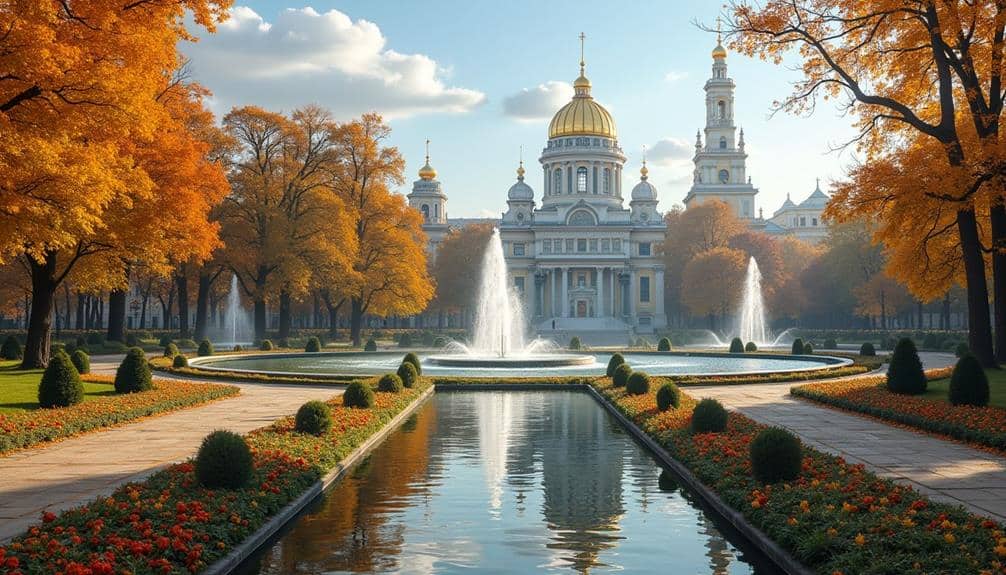
Steeped in rich history, Moscow’s parks and green spaces are not merely recreational areas but also repositories of cultural and historical heritage. From the era of the Tsars to the Soviet period and into modern times, these verdant sanctuaries have played essential roles in the city’s narrative.
Gorky Park, for instance, established in 1928, stands as a symbol of Soviet culture and leisure, reflecting the social changes and aspirations of the time. Its transformation over the decades mirrors the broader socio-political shifts within Russia.
Similarly, Kolomenskoye Park dates back to the 14th century and served as a royal estate. It houses ancient churches and wooden structures that offer glimpses into Russia’s past. The park is not just a green space but a living museum, embodying centuries of architectural and historical evolution.
Furthermore, Alexander Garden, located near the Kremlin, was one of the first urban public parks in Moscow, inaugurated in 1821. It commemorates Russia’s victory over Napoleon and features the Tomb of the Unknown Soldier.
These parks are more than mere escapes from urban life; they are crucial threads in the intricate tapestry of Moscow’s storied past, offering a sense of continuity and identity.
Recreational Activities
Beyond their historical significance, Moscow’s parks and green spaces serve as bustling hubs for recreational activities, catering to diverse interests and age groups. These verdant sanctuaries offer a plethora of options for those seeking both tranquility and adventure, making them essential components of urban life.
Cycling enthusiasts find solace on well-maintained bike paths, winding through lush landscapes, while joggers utilize the extensive network of running trails. For families, playgrounds provide safe, engaging environments for children, fostering physical activity and social interaction. Additionally, fitness stations and open areas for yoga and tai chi accommodate those pursuing health and wellness.
Water activities are equally popular, with paddleboats and rowing opportunities available on serene park lakes. In winter, these same spaces transform into skating rinks, inviting residents to embrace the season with spirited ice-skating sessions.
Cultural pursuits are not neglected; open-air theaters and amphitheaters host concerts, plays, and dance performances, enriching the city’s cultural fabric.
Moreover, community events such as farmers’ markets, art fairs, and seasonal festivals frequently populate these green spaces, engendering a sense of unity and shared experience. Consequently, Moscow’s parks and green spaces epitomize the spirit of recreation and freedom in an urban setting.
Wildlife and Biodiversity
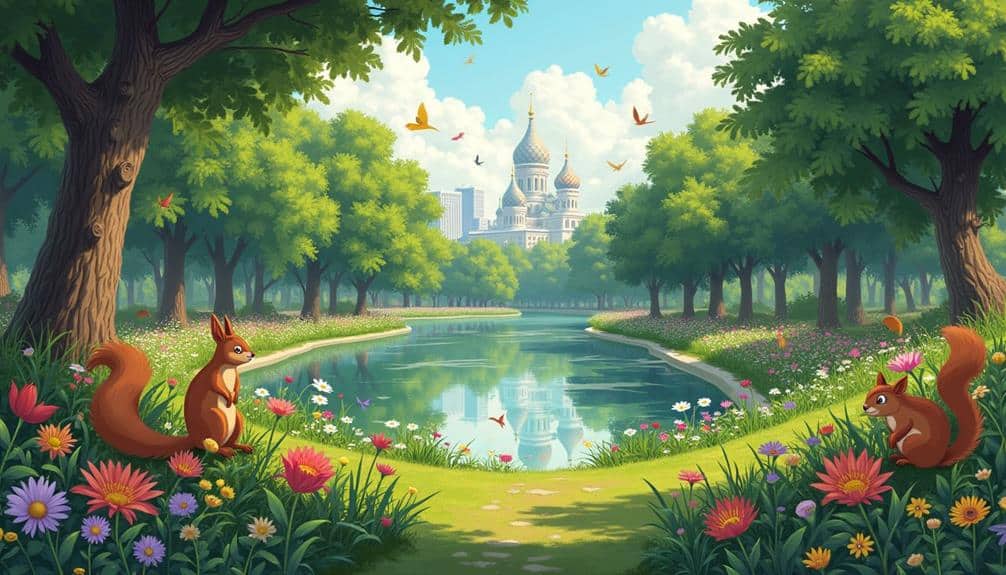
Moscow’s parks and green spaces are not just recreational havens; they are also essential reservoirs of wildlife and biodiversity. These urban oases support a myriad of species, providing fundamental habitats that sustain the rich ecological tapestry of the region. From the iconic Gorky Park to the expansive Losiny Ostrov National Park, these verdant areas are home to an array of flora and fauna, including rare and endangered species.
The biodiversity found in Moscow’s green spaces contributes considerably to the ecological balance of the city. Trees and plants not only offer sanctuary to birds, insects, and small mammals but also play a pivotal role in air purification and climate regulation. The presence of diverse species enriches the urban environment, fostering a connection between residents and nature, and enhancing their quality of life.
Furthermore, these parks serve as essential corridors for wildlife, facilitating movement and genetic exchange between populations. This connectivity is critical for the survival of many species, ensuring resilience against environmental changes.




